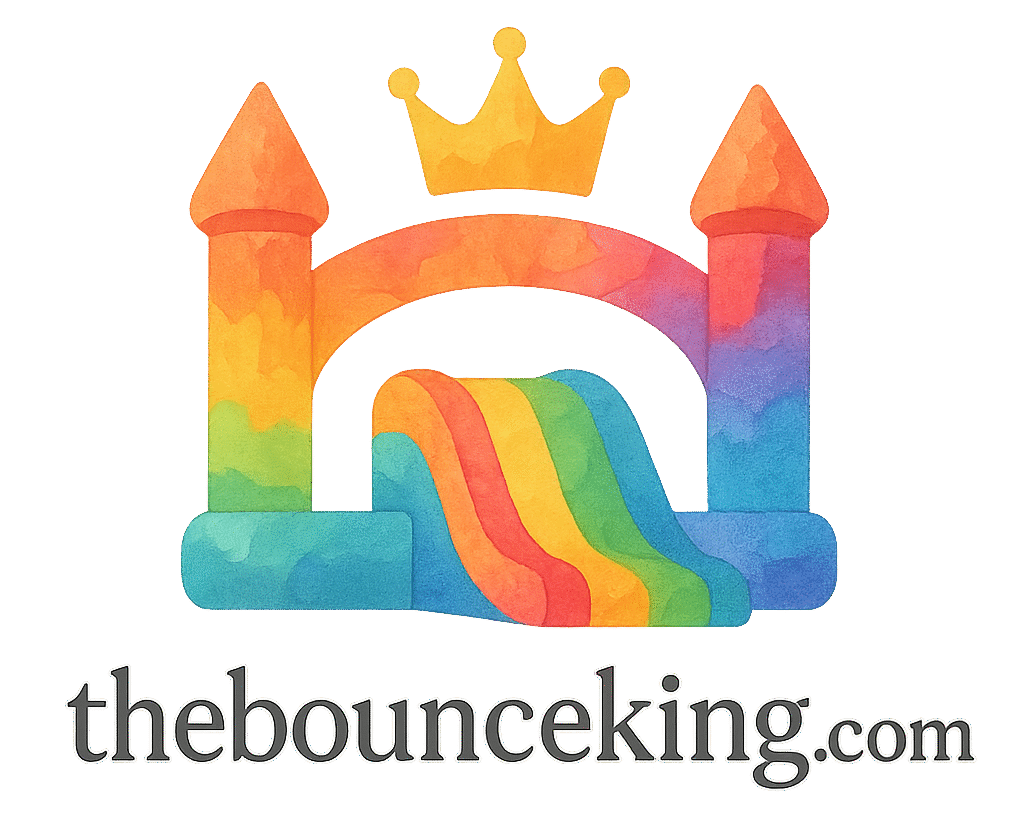Introduction: The Importance of Bounce Safety
Bounce houses are a staple of any child’s birthday party, outdoor event, or school carnival. They provide endless hours of fun, joy, and laughter. However, it’s essential to remember that while bounce houses are fun, they also come with certain risks. Injuries can occur if safety precautions are not followed. As a parent, ensuring that your children know how to play safely in bounce houses can prevent accidents and ensure they have a safe, enjoyable experience.
In this article, we’ll go over 12 essential bounce safety rules every parent must teach their kids to ensure they stay safe while having fun. Whether you’re hosting a bounce house at home or renting one for a special event, these rules are critical for keeping your child’s bounce play safe and accident-free.
Rule #1: Always Supervise Your Kids While They Bounce
One of the most important rules for bounce safety is supervision. It’s tempting to relax while your child plays, but even a few minutes of unsupervised bouncing can lead to accidents. Parents should always keep a watchful eye on their children while they are in the bounce house. It’s important to stay close by to make sure the kids are following the rules, using the inflatable correctly, and playing safely.
If you’re renting a bounce house, make sure you have a responsible adult overseeing the play area at all times.
Rule #2: Check the Safety of the Inflatable Before Use
Before allowing your children to play in the bounce house, inspect it for any potential hazards. Check the seams, air valves, and structural components to make sure there are no holes, tears, or damage. Ensure that the bounce house is properly inflated and stable. If you’re using inflatable bounce rentals, always choose a reputable company that provides well-maintained equipment.
Rule #3: Ensure Proper Age-Group Segregation
Bounce houses are designed for specific age groups, and it’s important to stick to these guidelines. Smaller children can be injured if they are playing with older, heavier kids who may have more strength and energy. Make sure that kids are playing with others in the same age group and size. Most inflatable rental companies, like Bounce Business Rentals, provide age-specific options that ensure kids of similar sizes are using the same bounce houses.
Rule #4: Set Clear Boundaries for Play
Establish clear boundaries before your kids start playing. Explain where they can and cannot go within the bounce house. For example, no climbing on the walls or jumping from high places inside the inflatable. These rules prevent risky behavior and help maintain order, making it easier to supervise the children.

Rule #5: Limit the Number of Kids on the Bounce House
Overcrowding a bounce house is one of the leading causes of injuries. Set a maximum limit for the number of children allowed to play in the bounce house at any given time. Ensure that the number of children in the inflatable is manageable for both safety and fun. For more information on how to manage bounce house events, check out seasonal bounce events for tips.
Rule #6: Make Sure Kids Are Wearing the Right Attire
Before entering a bounce house, make sure that kids are dressed appropriately. Avoid loose clothing or anything that can get caught in the bounce house material. Shoes should be removed before entering, as they can cause damage to the inflatable and lead to accidents. Consider wearing comfortable clothes that don’t restrict movement, ensuring a more enjoyable and safer bounce experience.
Rule #7: Teach Kids How to Bounce Safely
Kids must learn how to use the bounce house correctly. Teach them to bounce safely by bending their knees when they jump and keeping their hands to themselves. Show them how to use the structure without causing harm to themselves or others. If you’re unsure of safety techniques, look for tips on bounce safety tips for guidance.
Rule #8: Enforce No Flipping or Rough Play
It can be tempting for children to perform flips or other risky stunts in the bounce house. However, this type of behavior is dangerous and can lead to serious injuries. Enforce a strict “no-flipping” policy, and teach your kids to play gently and responsibly. Make sure they understand that roughhousing, pushing, and excessive bouncing can be dangerous.
Rule #9: Ensure Kids Are Using the Bounce House Correctly
Bounce houses should be used as they were intended—only for bouncing! Discourage kids from trying to climb up the walls or jump off the sides. This kind of play can cause them to fall or injure themselves. Encourage your children to stay centered and play within the designed limits of the bounce house.
Rule #10: Do Not Allow Sharp Objects Inside the Bounce House
Sharp objects, such as keys, phones, or jewelry, should never be brought into the bounce house. These items can cause damage to the inflatable and may also result in cuts or other injuries to the kids. Make sure that everyone removes any sharp objects before entering.
Rule #11: Avoid Bouncing When the Weather is Bad
Weather conditions play a significant role in bounce house safety. Avoid using the bounce house in windy, rainy, or stormy conditions. High winds can cause the inflatable to lift, while rain makes the surface slippery, increasing the risk of falls. Keep an eye on the weather forecast and ensure that the bounce house is only used when conditions are safe.
Rule #12: Educate Kids About Injury Prevention
Finally, teach your children how to prevent injuries. In addition to the above rules, encourage them to listen to their bodies. If they feel tired, dizzy, or unwell, they should take a break from bouncing. Provide your kids with the knowledge they need to make smart decisions while playing.
The Benefits of Bounce Safety for Kids
Teaching kids about bounce safety doesn’t just prevent injuries—it also helps foster a sense of responsibility. When children understand the importance of following safety rules, they become more aware of their actions and learn to respect the equipment and the space they are playing in. This not only makes the experience safer but also more enjoyable for everyone involved.
Conclusion: Why Bounce Safety Should Be a Priority
Bounce houses are a fun and exciting way for children to engage in physical activity and have a great time. However, ensuring that children understand and follow bounce safety rules is essential for preventing accidents. By supervising your children, enforcing proper play techniques, and using a well-maintained bounce house, you can provide a safe environment for fun and laughter. Remember, a little caution can go a long way in making sure your child’s bounce experience is both fun and injury-free.
FAQs
- What age group is best for using a bounce house? Bounce houses are typically designed for children ages 3-12. Always check the manufacturer’s recommendations before use.
- Should I rent a bounce house for a large party? Yes! Renting a bounce house is a great way to keep kids entertained at large parties, but make sure to monitor the number of kids inside at once.
- How do I know if the bounce house is properly inflated? Check that the bounce house is firm and stable. If it’s sagging or uneven, it may need to be re-inflated.
- Can kids bounce when it’s windy? No. Windy conditions can make bounce houses unsafe. Always wait for clear weather before using a bounce house.
- What safety features should I look for in a bounce house rental? Look for a bounce house that has sturdy safety nets, anchor points, and is made from durable material.
- Are there any bounce house safety certifications? Yes, reputable rental companies ensure their equipment complies with safety standards set by organizations such as the ASTM (American Society for Testing and Materials).
- Can adults use bounce houses? Adults can use bounce houses if the structure is designed for larger individuals. However, it’s always safer for adults to avoid them, as they can cause damage to the equipment and injury to themselves.


